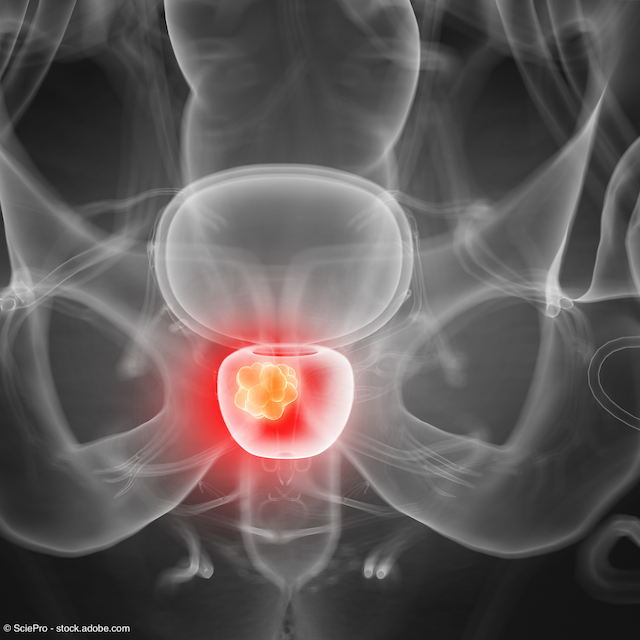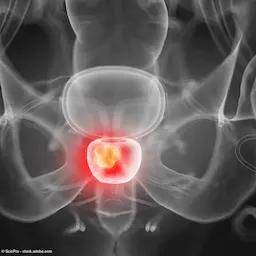Feature
Article
The evolving role of PSMA-PET along the continuum of prostate cancer
Author(s):
“I think the use and the appropriateness of these agents along the patient journey is also coming into question,” says Brian T. Helfand, MD, PhD.
In this interview, Brian T. Helfand, MD, PhD, discusses the growing role of PSMA-PET imaging across different stages of prostate cancer. Helfand is a urologic oncologist at NorthShore University Health System in Chicago, Illinois.
This transcription has been edited for clarity.
Brian T. Helfand, MD, PhD

In your experience, how common are situations where a patient might receive unnecessary treatment for prostate cancer due to an initial misinterpretation of radiology reports?
It’s a moving target. I think we still don't appreciate the extent by which we are modifying our plans appropriately or inappropriately to date. A lot of imaging historically relied on CT and bone scans. Certainly, I think we would overtreat people in the wrong areas, especially in the biochemical recurrence setting, and even in the progression of advanced disease and initial treatment of advanced disease, we were underestimating the extent and/or location of the tumors. I think a lot of this has changed, and as urologists, radiologists, oncologists, and medical physicians, we have become reliant on what we refer to as next-generation or advanced imaging technologies with PET/CT imaging. A lot of these PET/CT imaging have increased sensitivity and specificity for identifying tumors in the initial staging, as well as the recurrent settings. I think we believe that when we see an image, that is the truth. For a lot of it, it is an improved truth from what we've historically had in comparison to CT and bone scans, and even MRIs.
On the other hand, we have to recognize that many times, these imaging technologies will miss the identification still, because the tumors are so small that they're beyond the ability of the PET/CT imaging to recognize where these tumors are coming from. So, we still aren't perfect at that. I would say that anything under 4 millimeters, but even potentially 1 centimeter of a tumor, we may miss by using a lot of these PSMA type of imaging studies. On the other hand, there are certainly false positives. We know that based on the imaging agent, the [way that] various tissues and/or other types of tumors pick up these scans or just in the way that the imaging radiotracers are processed by the body, we sometimes look at an image and get the sense that there's a prostate tumor recurrence or prostate tumor in a location that's actually not there. So, sometimes we potentially over-treat these patients. However, I would say that the initial data [show], and there's very few studies that have been conducted in this setting, is that when we use this advanced imaging, it’s actually improved outcomes.
What role might PSMA-PET imaging play in active surveillance of prostate cancer?
Looking at the ability of PSMA-PET imaging [to expand] into new spaces is always really exciting. I do think that the ability to estimate the location and/or extent of a tumor is imperative to active surveillance. We do know that higher volume tumors have a higher risk of having more aggressive disease and certainly, if we knew that patients have higher volume or more aggressive tumors, they may not be suitable for active surveillance. While most of these studies are ongoing, the initial data looks promising to say that there may be a role for a PSMA next-generation imaging in the decision for appropriateness for active surveillance. And certainly, if you do have intense bilateral signals, that may not be as appropriate as if someone has a very minimal amount of radiotracer accumulation or avidity in their prostate. So, the data still is forthcoming, but I'm very excited that this may be a new ability to more appropriately identify patients. I think also the promise of combining a lot of these technologies, so using PSMA-PET/CT imaging with MRI imaging, so I guess it would be PSMA-PET MRI imaging, also adds a new dimension as well. We really have to validate the sensitivity and specificity in these settings, but again, these studies are ongoing and looking to see how they come out.
Could you expand on how PSMA-PET imaging may alter treatment plans, both in the escalation and de-escalation of therapy?
A lot of the trick of prostate cancer is that if we can see where the location of a tumor is, that's going to help identify where we should focus our treatment. I think that that makes sense. And certainly, [where] that comes into play is that if you only have a tumor that's localized to the prostate that we can see, even with the fanciest PSMA-PET imaging studies, we feel better that we may not have to treat other areas, especially when in the staging setting of a high-risk or very high-risk tumor. Certainly, when we talk about the biochemical recurrence tumor where these days, we have more focal treatments, we want to target those treatments, including SBRT, to other sites that we may see. We can intensify the treatment in those settings to say that if we have a biochemical recurrent situation where we have a rising PSA after a prostatectomy, we do a scan, and we see that there is limited uptake in the prostate bed, but there's a lymph node that may either be in the pelvis or distant, we can then make our plan based on that. That plan may include an intensification [and] in addition to radiating the pelvis, you may actually radiate that area, if possible or feasible.
Then it also begs the question, if you see that, how much hormone therapy in the N1 or M1, M0 type setting, and again, depending on that situation and what the images show, would [we] actually offer that patient. It certainly adjusts that plan because again, when we know that there's disease present, especially in M1 setting, we're going to involve an intensification with more extended hormone therapies, etc. I think this is really playing a role in the decision for where we're localizing our radiation therapies as well as the addition of ADT plus an androgen receptor pathway inhibitor, ARPI, and the duration of these therapies. I think the intensification or even de-escalation when we don't see those diseases is quite appropriate and our natural reaction to those imaging results.
What advancements do you foresee in PSMA-PET technology or interpretation methods that could improve its role in guiding treatment options?
I think there's many different areas that are really exciting in the PET imaging field. Certainly, I think that the ability to become more and more sensitive is imperative. Right now, we still don't really appreciate the limits or extent of how small of a tumor we can identify. I think I previously said that right now, I think we can get to about 4 millimeters. But again, we really want to compete with pathology, meaning that if we can get the agents to be as sensitive as the microscope, then we're really hitting it out of the park. I think [that with] a lot of the newer agents that may have multiple areas that will light up, over time, we have the ability to increase our sensitivity. The other exciting area is understanding the biology. We know that not all prostate tumors, and certainly in the recurrent or hormone refractory setting, are going to be PSMA-positive, or avid. As such, we may have to employ other types of radiotracers that may be more appropriate in those settings. So, understanding the biology of that tumor and/or combining or using multiple radiotracers, either simultaneously or in sequence, may really be exciting to identify where those tumors are located. I think that is another exciting part of where the field is going, is to say, "What other tracers should we be using? Should we be using neuroendocrine avid tracers, etc, in that same type of setting, especially when patients have been exposed to hormone therapy, etc? I'm really excited about a lot of what is coming forth.
Then I think [another direction], as previously brought up, is to say, once we understand a lot of that, what settings are most appropriate? Should we be using certain radiotracers to identify patients at the beginning of their journey when we are either screening patients or using those as decisions for active surveillance, and in the staging and recurrent settings. I think the use and the appropriateness of these agents along the patient journey is also coming into question. A lot of this will also be balanced by the cost, because many of these are really expensive. We have to always keep in mind what other tools that we should be using that may be either equally or more appropriately cost-effective.
Newsletter
Stay current with the latest urology news and practice-changing insights — sign up now for the essential updates every urologist needs.
















